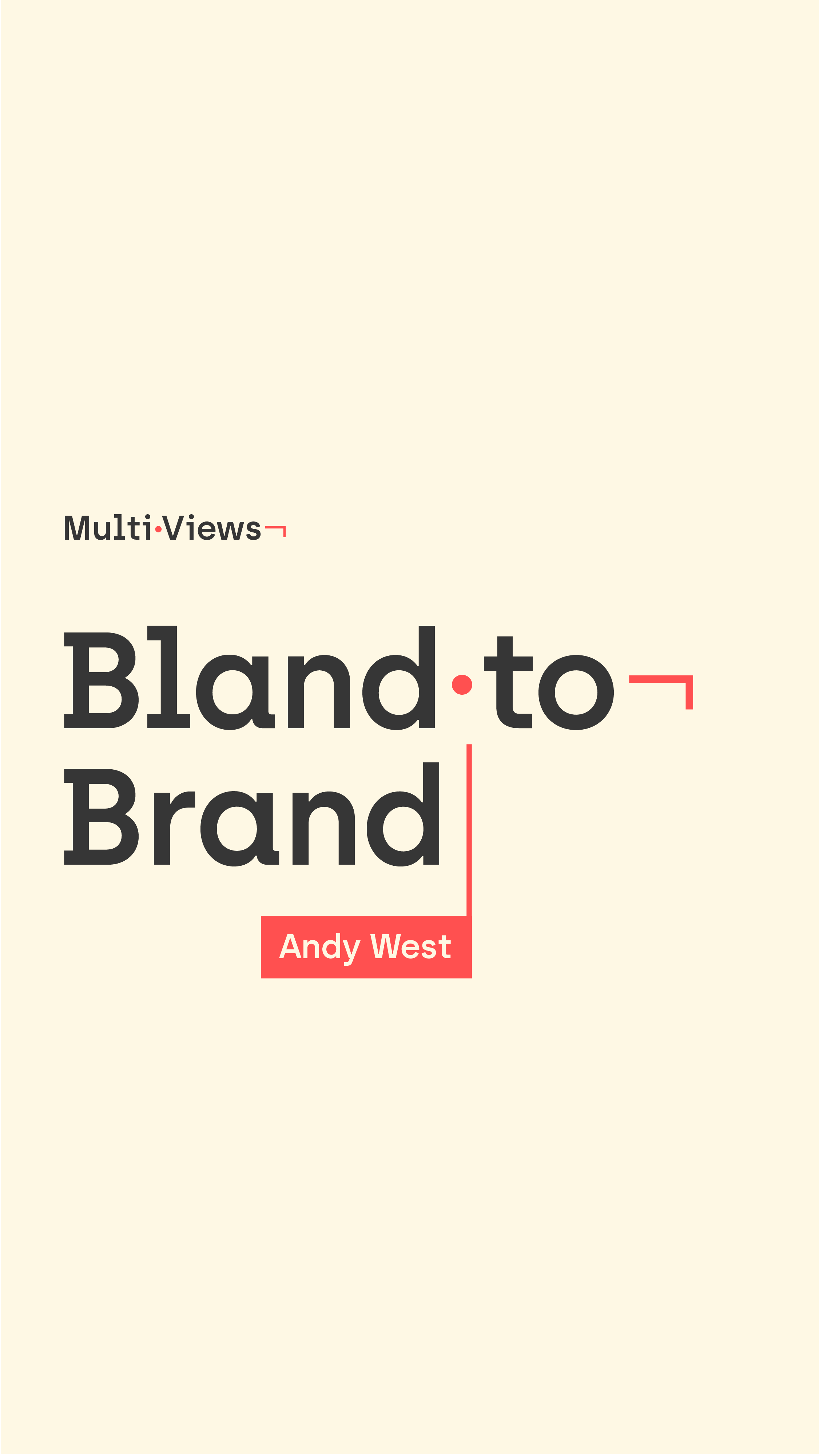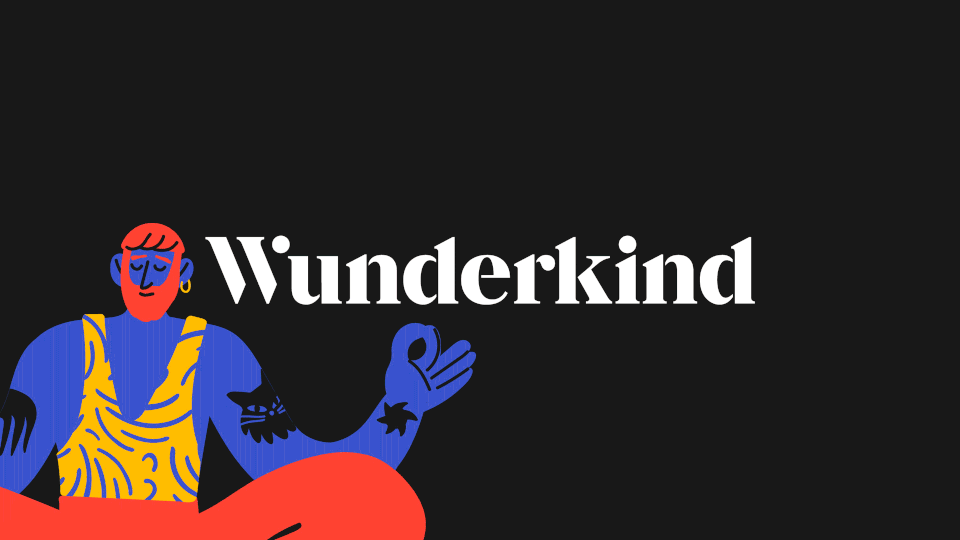Five opportunities for B-to-B brands to be brilliant
We’ve always found B-to-B a much unloved, but creatively rich space. Given the right conditions, we believe any B-to-B brand can be brilliant: creating a sense of pride and belonging amongst staff, and connecting emotionally with audiences.
Through our experience working on brands such as marketing technology pioneers WunderKind and Vungle, we have identified some recurring opportunities that repeatedly stare B-to-B brands in the face, but aren’t always taken advantage of. Identified and activated however, they can help to transform how they look, sound, feel, and act. Here are the five we have noticed most often.
1. Who are you?
Like humans, each and every business is unique. All made up of different people, with their own way of doing things, and their own story to tell. So it stands to reason that the brands that embody who they are and what they do should be different too.
Yet many B-to-B brands’ businesses overlook the fact that they often have a distinctive character and personality buried away. It never shows up externally so the brand feels nice and safe, but like everyone else in the category.
Working with Wunderkind, we learned that individuality is a philosophy and belief baked deeply into the company’s culture and offer. Yet, their previous brand felt like it could belong to anyone. By staying true to who they are, today they have a brand that reflects on the outside who they are on the inside.
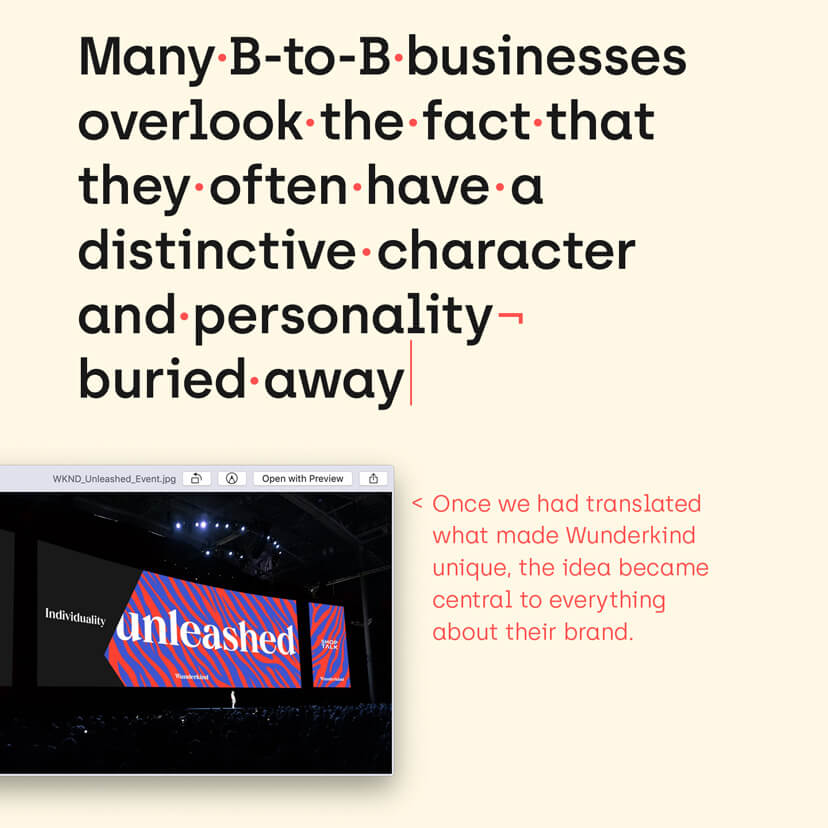
2. What’s the world problem?
B-to-B businesses often start to express themselves through the lens of the technical or software problem they are solving. They place the emphasis on what they offer, but often don’t relate it to a bigger human or societal problem. And almost always, you can.
As soon as you are a part of solving a much bigger problem, you suddenly become a whole lot more interesting. You have a cause. You define a bigger mission. It opens you up to solving more challenges and being relevant to more people.
Wunderkind’s technology helps to create better targeted advertising. It’s a story which could be told in a very technical way. But, by framing what they do around something they are fighting for — an internet of individual experiences, rather than a world of one-size-fits all advertising — it becomes a company that’s much more than just marketing. It stands for something bigger than itself. One that people can identify with and get behind.
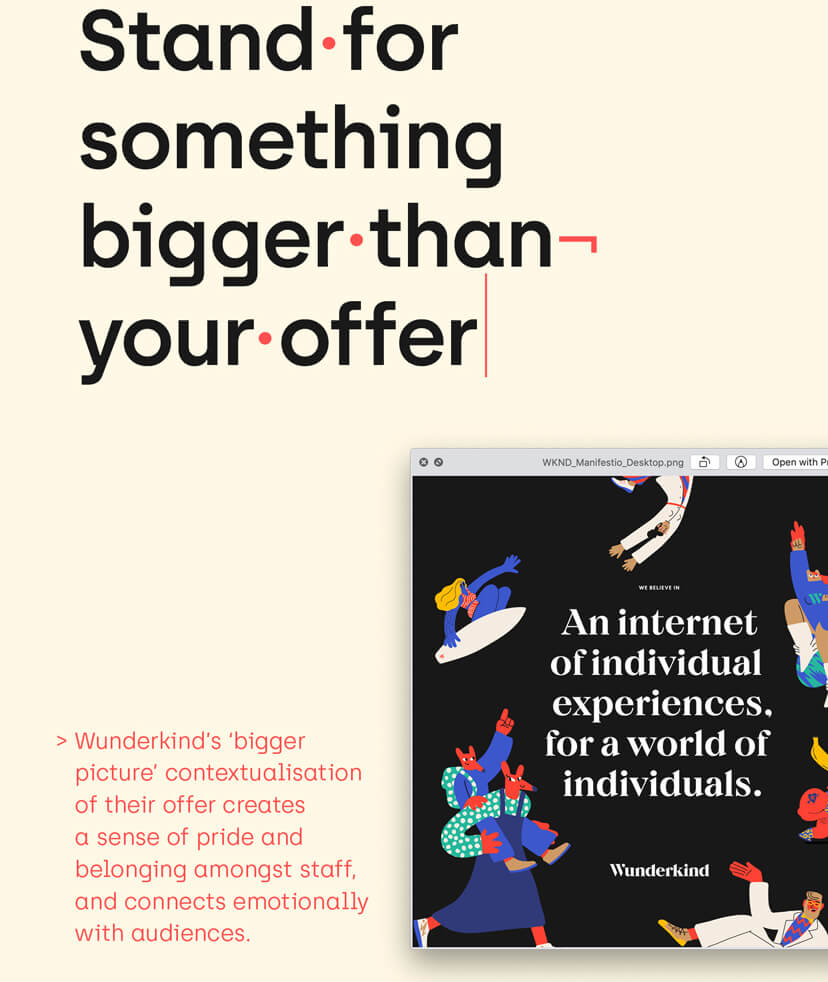
3. Behold the sea of sameness
Almost always, B-to-B markets are awash with brands that look exactly the same. You can spot the trends a mile off: a mini world where everyone says the same things in pretty much the same way.
One of the simplest moves B-to-B brands can make is to radically differentiate, or ‘zag’ — a term coined by Marty Neumeier, author of essential brand read, Zag. Zagging is what you frequently see challenger brands do to shake up the status quo and stand out. It’s a technique B-to-B brands should more often to set themselves apart from the bland brands sailing in the sea of sameness.
When rebranding the mobile advertising company Vungle, we were surprised to learn that businesses in the world of mobile advertising were super cold and corporate. Professional, but forgettable. Not what you expect from tech companies helping to power a vibrant, dynamic world of apps and games. So making Vungle feel very much part of that world, and reinforcing their creative and innovation credentials, helped to put clear water between themselves and the rest.
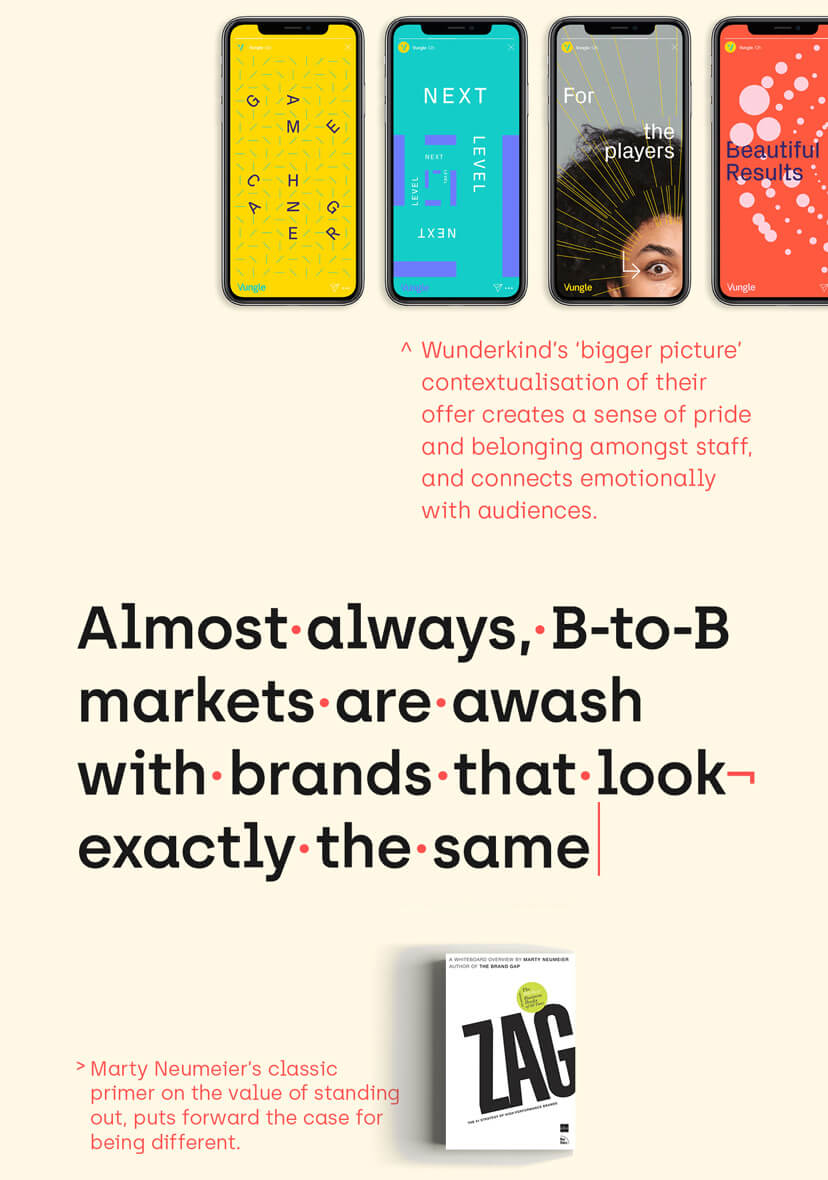
4. Find your voice
Without needing the general public to understand their messages, B-to-B brands have a tendency to explain things to other businesses using technical language, and corporate business-speak. Ultimately, this only ever alienates and confuses people in an attempt to sound like an expert.
When B-to-B brands speak in plain English, talk in an active voice, and lead with the reasons why people should care — what they say jumps off the page and slices through their competitors’ mumbling and waffle.
But, B-to-B brands doing brand voice well are few and far between. Is it because of confidence? Too many people compromising it? A fuzzy personality? Too hard? Who knows. But it’s an opportunity for B-to-B brands to seize, and cut through where others can’t.
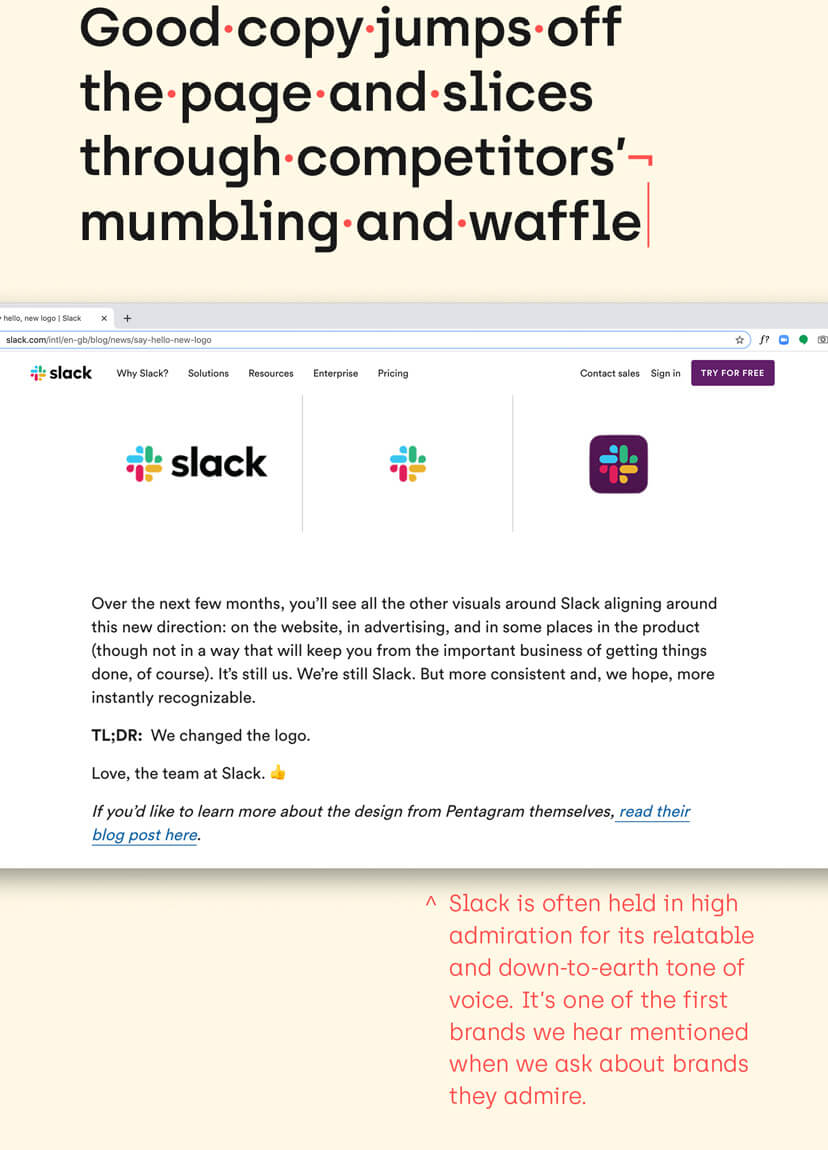
5. What’s the big idea?
We find many B-to-B businesses have articulated their vision. They have a mission, and probably some values. They often have a value proposition and a sense of what they are about. But, all these things tend to exist independently. At best they appear in a paragraph on the homepage, and at worst lost in a slides deck.
A brand strategy is only any good if it’s universally shared, understood, and put to use. If it’s complicated, filled with jargon, or just sitting in a leadership deck, then it can be a lot of work for very little impact. We tend to find that the less things people have to remember, and the ‘stickier’ those things are to recall, the more chance the brand thinking has of being adopted. For us, this is where a brand idea becomes the most important strategic component, helping to elegantly articulate the brand’s truths while inspiring action and creative expression.
Putting the idea of ‘Creative Performance’ at the centre of the Vungle brand, not only helped to clarify what they uniquely provide, it reflected the innovative and analytical culture. It inspired its identity, and meant creative thinking, creativity and innovation sat centre-stage within the business in terms of new products and client experience.
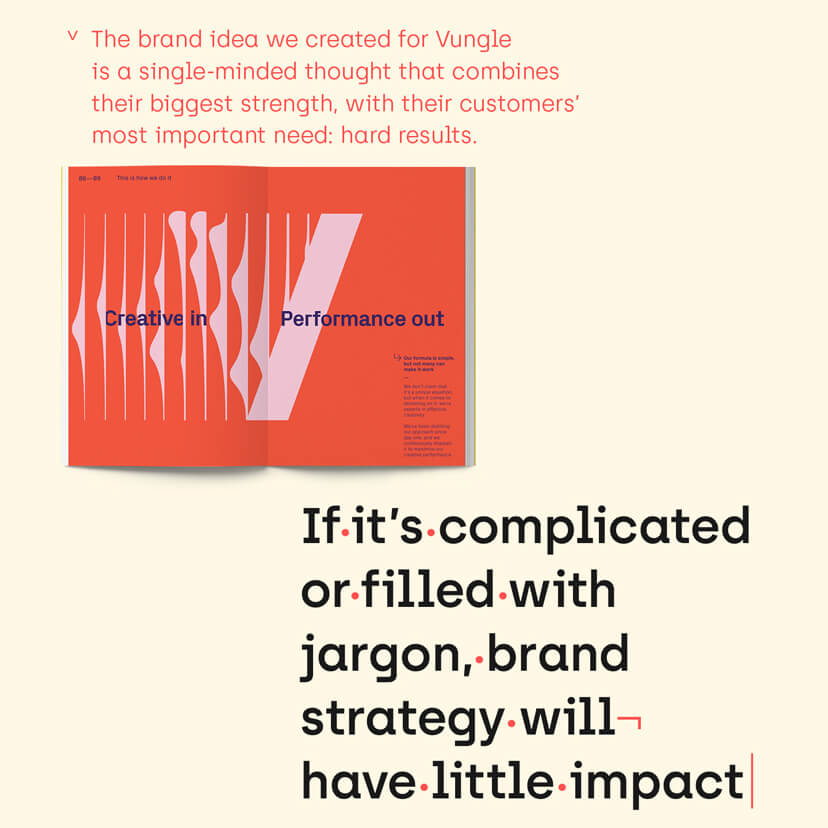
Unlock the power of your B-to-B brand
B-to-B brands needn’t be bland and boring. We think they deserve to be brilliant. And research shows, it’s brilliant for business, too. So if you won’t settle for Bland-to-Bland, then we’d love to chat about how we can help.
